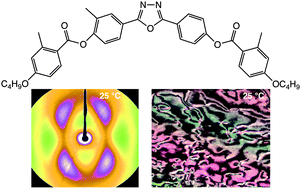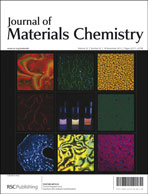As part of our efforts to access the biaxial nematic phase at low temperatures, we prepared a series of 1,3,4-oxadiazole-based bent-core mesogens that possess either one or three lateral methyl groups. The phase behavior of these derivatives was characterized using polarizing microscopy and differential scanning calorimetry. Target compounds containing one methyl group showed large nematic ranges but relatively high clearing points. The derivatives with three methyl substituents showed lower nematic onset temperatures and two of these compounds supercooled in the nematic phase to room temperature. X-ray diffraction experiments confirmed the presence of cybotactic clusters in the nematic phase, as observed in other bent-core mesogens. However, for two of these derivatives, cybotaxis persists at room temperature, due to the formation of a glassy nematic phase at low temperatures. These results suggest that these materials could be promising candidates in the search for low temperature biaxial thermotropic nematics.

You have access to this article
 Please wait while we load your content...
Something went wrong. Try again?
Please wait while we load your content...
Something went wrong. Try again?


 Please wait while we load your content...
Please wait while we load your content...